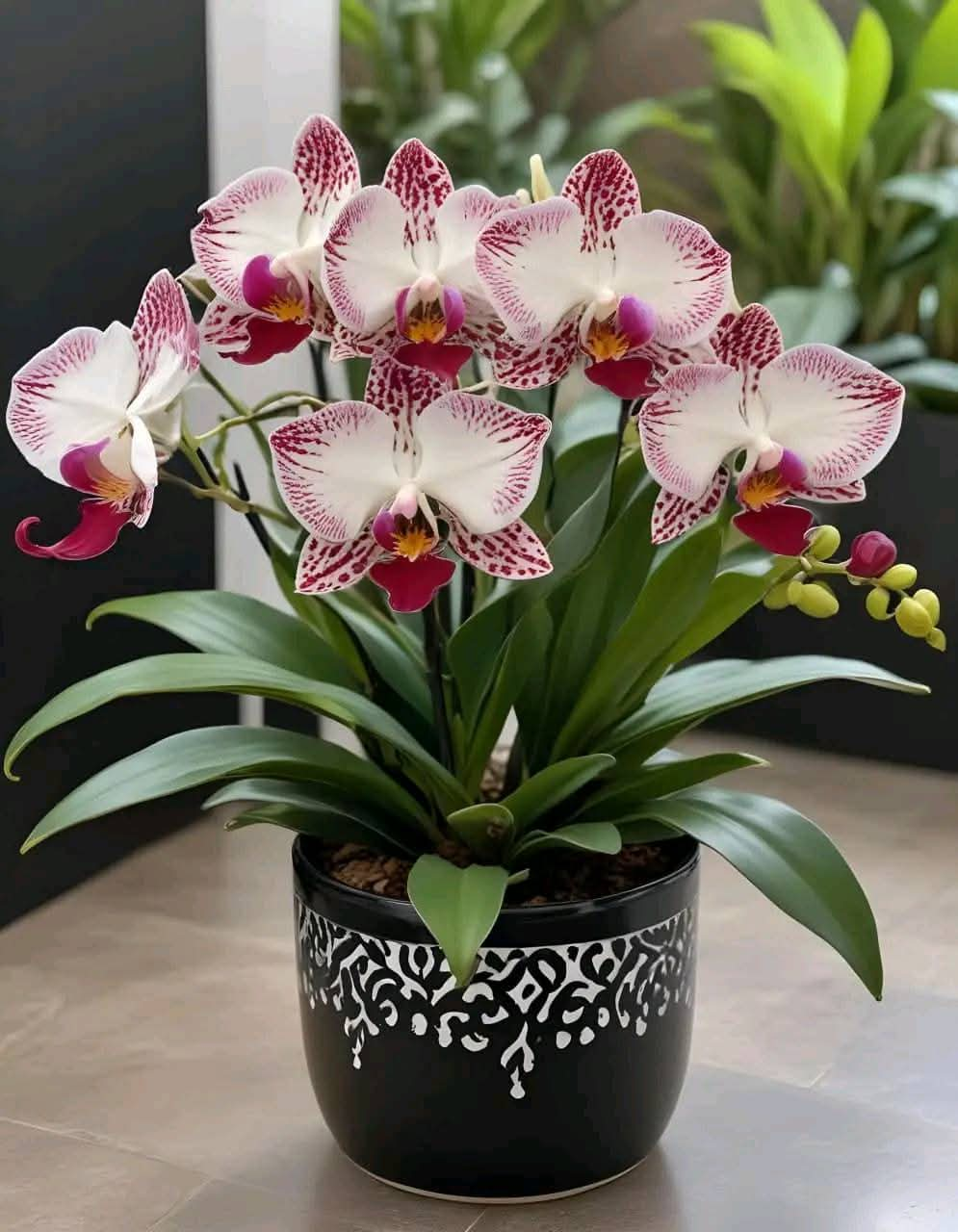Cattleya orchids, often referred to as the “Queen of Orchids,” are known for their stunningly vibrant blooms, delicate ruffled petals, and captivating colors. These orchids, particularly in red, white, and pink hues, stand out as symbols of elegance, grace, and sophistication. Perfect for any garden or indoor display, their dramatic presence creates a mesmerizing visual contrast with lush green foliage.
Why Choose Cattleya Orchids?
Cattleya orchids are among the most sought-after orchid species due to their large, colorful, and fragrant blooms. Available in a variety of hues, the red, white, and pink variations are especially eye-catching. Their ability to transform any setting into a tropical paradise makes them a favorite among orchid enthusiasts and interior decorators alike.
Key Features of Red, White, and Pink Cattleya Orchids
Striking Colors:
Red: Symbolizing passion and energy, red Cattleya orchids are bold and captivating.
White: Representing purity and elegance, white blooms add a serene touch.
Pink: A sign of love and admiration, pink orchids exude warmth and charm.
Ruffled Petals: These delicate, frilly petals enhance the orchid’s beauty, making them stand out among other flowers.
Fragrance: Many Cattleya orchids are fragrant, adding an aromatic appeal to their aesthetic charm.
Versatility: These orchids can thrive indoors in decorative pots or outdoors in tropical gardens.
Care Guide for Cattleya Orchids
To ensure your orchids bloom beautifully and remain healthy, follow this detailed care guide:
Light
Provide bright, indirect sunlight for optimal growth.
Morning sunlight is ideal, but avoid harsh midday rays that can scorch the leaves.
Indoors, place them near an east or south-facing window with filtered light.
Watering
Keep the potting medium consistently moist, but do not allow the roots to sit in water.
Water when the top inch of the potting mix feels dry.
Use distilled or rainwater for best results, as Cattleya orchids are sensitive to mineral buildup.
Soil
Plant them in a well-draining orchid potting mix, typically bark-based, to prevent waterlogging.
Ensure the roots have plenty of airflow to mimic their natural epiphytic environment.
Temperature
Maintain temperatures between 60-85°F (16-29°C) for healthy growth.
Avoid sudden temperature changes or exposure to drafts.
Humidity
These orchids thrive in high humidity (50-70%).
Increase humidity with a pebble tray or humidifier, especially in dry climates.
Fertilizer
Feed your orchids with a balanced orchid fertilizer every 2-3 weeks during the growing season (spring and summer).
Reduce feeding during the dormant period (fall and winter).
Decorating with Red, White, and Pink Cattleya Orchids
These orchids bring unparalleled beauty to any setting. Here are some ideas for incorporating them into your decor:
Indoor Displays:
Arrange orchids in decorative ceramic pots for a modern and elegant touch.
Use them as a centerpiece for dining tables, adding a sophisticated charm to meals.
Outdoor Gardens:
Create a tropical oasis by planting them alongside ferns, bromeliads, and palms.
Use hanging baskets to showcase their cascading blooms.
Special Events:
Perfect for weddings, anniversaries, or romantic settings, red and pink orchids symbolize love and passion.
White orchids bring timeless elegance to formal gatherings.
Common Questions About Cattleya Orchids
How often do Cattleya orchids bloom?
Cattleya orchids typically bloom once or twice a year, with each bloom lasting up to 4 weeks.
Can I grow them indoors?
Yes, Cattleya orchids thrive indoors as long as they receive adequate light, humidity, and airflow.
How do I encourage reblooming?
After blooming, allow the orchid to rest and reduce watering slightly. With proper care, the orchid will rebloom during its next growth cycle.
What pests should I watch out for?
Check for aphids, spider mites, and mealybugs. Use neem oil or insecticidal soap to treat infestations.
Tips for Healthy and Vibrant Cattleya Orchids
Rotate the Pot: Turn your orchid pot periodically to ensure even light exposure.
Repot Every 2-3 Years: Repot the orchid when the potting mix breaks down or when the plant outgrows its container.
Prune Dead Blooms: Remove spent flowers to direct the plant’s energy toward healthy growth.
Use Orchid-Specific Pots: Pots with slits or holes allow
